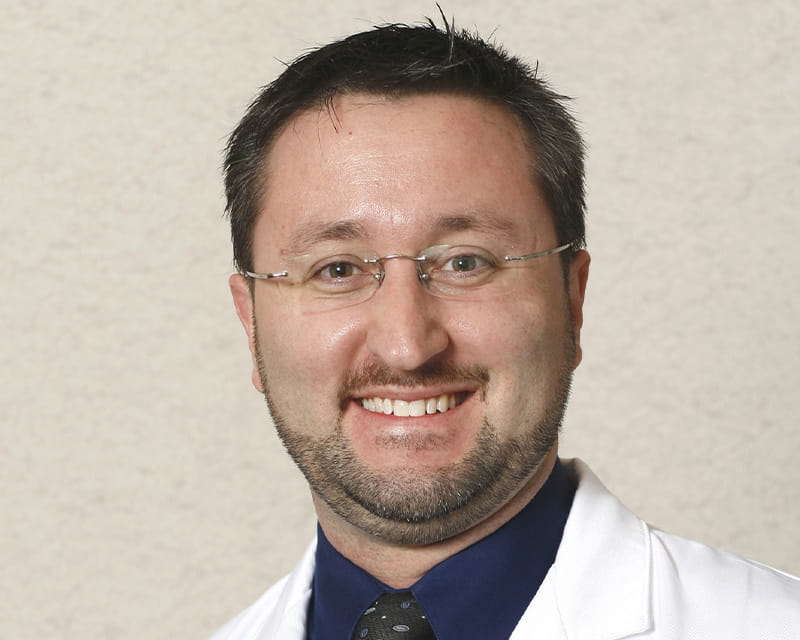
Robotic-assisted surgery with intraoperative radiation offers new hope to patients with local cancer recurrence
 There are nearly 300,000 people living with spinal cord injury (SCI) in the United States, and about 1 million each living with Parkinson’s disease and multiple sclerosis.
There are nearly 300,000 people living with spinal cord injury (SCI) in the United States, and about 1 million each living with Parkinson’s disease and multiple sclerosis.
“Many of these patients suffer significant complications related to their neurogenic bladder as continues to be demonstrated by high rates of urologic related health care utilization and high rates of hospital readmissions due urinary tract infections,” says Irene Crescenze, MD, an Ohio State urologist specializing in neuro-urology.
There is a large need in the United States to bring improved and timely urological care to patients with neurogenic bladder. Early urological care and follow up in SCI patients specifically can improve safety and quality of life, including preservation of renal function, infection prevention and promoting lifestyle modifications through early reconstructive options. Unfortunately, access to advanced urologic care for many SCI patients is limited by location, distance and/or limited resources.
At Ohio State, the inpatient and outpatient rehabilitation program at Dodd Hall is a local and national leader for treatment of patients with SCI and makes early subspecialty care possible for many of those patients. Ohio State is currently one of only 14 programs in the country that is part of the Spinal Cord Injury (SCI) Model System. This is a unique opportunity in which patients and researchers contribute longitudinal information on recovery and function after spinal cord injury to a national database. This database can be used for research to understand the factors that impact patient outcomes after a spinal cord injury and improve SCI care across the nation.
The Ohio State University offers unique opportunities for collaboration both in the clinical setting and in the research endeavors for the physical medicine and rehabilitation physicians and urologists. Their primary goal of this collaboration is improved patient outcomes and quality of life in the neurogenic bladder population.
Urinary function is a complicated and a finely coordinated interaction among the bladder, sphincter and the neurologic pathways in the spinal cord and brain. Neurogenic bladder dysfunction can present several ways and depends primarily on the level of injury.
The Ohio State Wexner Medical Center is one of a few centers nationally that offers advanced surgical options for patients with neurogenic bladder dysfunction such as spinal cord injury, multiple sclerosis, stroke or Parkinson’s disease.
“There are multiple studies that identify urinary function as a huge component of the quality of life in patients with spinal cord injuries,” Dr. Crescenze, an assistant professor - clinical in the College of Medicine, says. “At Ohio State, we give patients options for alternative treatments that can improve their quality of life.”
While clean intermittent catheterization (CIC) is considered to be the standard of care in management of neurogenic bladder, it has many downsides. ”CIC is especially challenging for women who are paralyzed – they have to transfer from the wheelchair to the bed, undress and repeat each time they need to urinate. This can limit their overall social functioning as being able to do all this while out of the comfort of your home can be very difficult,” Dr. Crescenze says.
Compared to men, women continue to be less satisfied with CIC as a bladder management approach even in the long-term. Additionally, for patients with limited hand function, CIC means complete lack of independence from a caregiver.
In order to avoid an indwelling catheter, which are known to be associated with urinary tract infections, patients may consider a catheterizable channel creation. This can be done along with bladder augmentation when indicated, and can allow patients to catheterize without having to undress completely and reposition for each event.
For patients with neurogenic incontinence, advanced management options may be considered, including pubovaginal sling or an artificial urinary sphincter. Robotic approaches to these surgical interventions can be considered for some patients, with the goal of shortening recovery time.
At Ohio State, we offer a variety of advanced surgical options for neurogenic bladder dysfunction, including bladder augmentation, catheterizable channel creation, pubovaginal sling and AUS, in addition to the more commonly used ileal conduit and suprapubic tube. The urology team works closely with the physical therapy and occupational therapy teams pre-operatively to evaluate and optimize hand function for those patients with upper extremity disabilities. The rehabilitation team can help introduce patients to assistive devices that can make catheterization possible even for those with relatively limited upper extremity strength.
At Ohio State, shared decision-making is the mainstay of quality-of-life decisions. “Our goal is to provide patients with the best possible option for their bladder management in their specific situation,” Dr. Crescenze says. “Together with the patient, we determine the right approach while keeping their quality of life in mind without compromising their safety.”
Dr. Crescenze and Nima Baradaran, MD, an assistant professor at the College of Medicine, are fellowship trained reconstructive urologists who have joined the Ohio State urology team within the last few years. They have a special clinical and research focus in management of patient with neurogenic bladder. Together with the physical medicine and rehabilitation team at Ohio State’s Dodd Rehabilitation Center, they are working to develop structured clinical pathways for SCI population, optimize follow-up and improve patient’s quality of life.
This service has an interactive, individualized care plan available with MyChart.